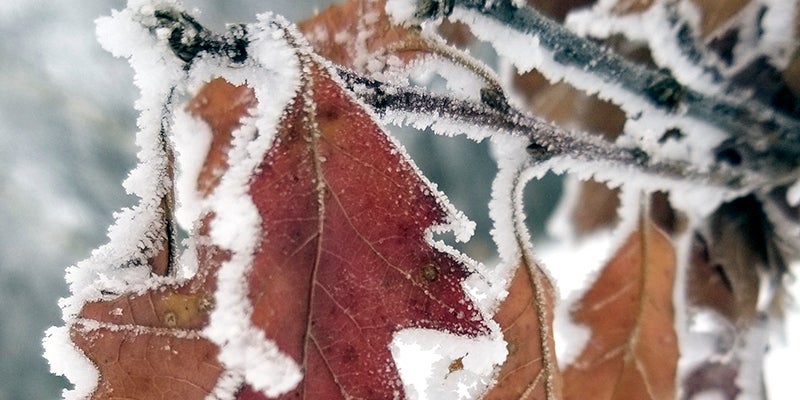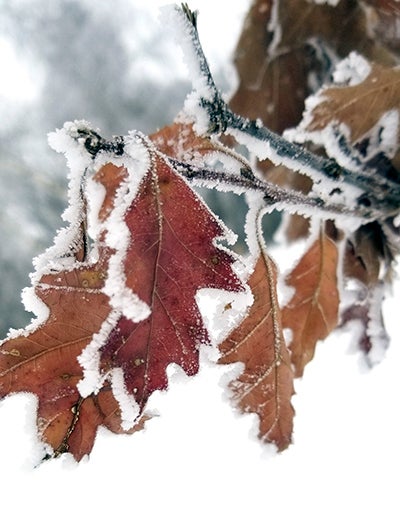Nature Notes: Frosty winter wonderland
Published 5:57 pm Tuesday, November 29, 2022

- Photo provided
|
Getting your Trinity Audio player ready...
|
By Sydney Weisinger
Teacher/Naturalist
My favorite thing to wake up to in the winter is frost covered everything! It gets me excited to go outside on a chilly morning to take beautiful pictures. I usually go out on my skis and explore the difference between the prairie trails and the forest trails at the Nature Center.
It’s amazing to see how ice forms differently on leaves, twigs, and/or grasses. If you look closely at these ice crystals you may notice that they look different than other ice crystals during winter. That is because they are! There are two different types of frosts that can happen during winter that create this mass frosting winter wonderland.

Photo provided
Hoar frost and rime frost are the two types of magical frosts that create ice crystals on everything. These two types of frost get easily confused, but there is good reason to understand the differences between them.
The first thing you may notice as you are walking around admiring the crystals is the way they form to solid objects. If you see light, feathery looking ice crystals you are looking at hoar frost. This frost can be blown off by the wind and is usually destroyed once the morning sun has warmed it up slightly. If you are hesitant to touch the needle looking crystals, then you are looking at rime frost. This frost can also been observed as frozen droplets. They form very thick and heavy, appearing to weigh down tree branches. The difference in appearance has everything to do with the way these ice crystals were formed.
If you are a true Minnesotan, then I know you love looking at the weather! That’s exactly what you need to do to know which type of crystal formed overnight. If it was a clear, cold night with moisture in the air that you could not see as fog, you are looking at hoar frost. Moisture in the air on these clear, cold nights, goes right from a gaseous state to a solid state when it comes into contact with something like trees or power lines. Rime ice happens when there are low clouds or fog in the air. The super cooled water particles in the fog stay in liquid form until they come in contact with something solid, instantly freezing. This type of instant freezing is what creates black ice, can weigh down power lines and cause power outages, and cause flights to be delayed. This “frosting” will not go away anytime soon, it will take a few warm days or you breaking the ice off before it disappears.
No matter if you are interested in the science behind the frostings or just fascinated by the beauty it creates, everyone should know the difference between the two for winter safety. Knowing that there is a difference also creates a call for investigation, which means getting outside, up close and personal with nature. So bundle up and get outside to explore the many wonders nature has to offer this winter.
December at the Nature Center
Dec. 8: Free Event —Merry and Bright Night, 4-8 p.m.
Dec. 12: Registration for winter and spring activities begins online.
Dec. 14: Free Event — Live Bird Program, 4 p.m.
Dec. 17: Julie Champlin’s Retirement Party Open House – Ruby Rupner Auditorium, 1-4 p.m.
Dec. 19: American Red Cross Blood Drive, noon to 6 p.m.
Dec. 24: Interpretive Center closes at 1 p.m.
Dec: 25-26: Interpretive Center closed
Dec. 31: City-wide Archery Deer Hunt Ends



